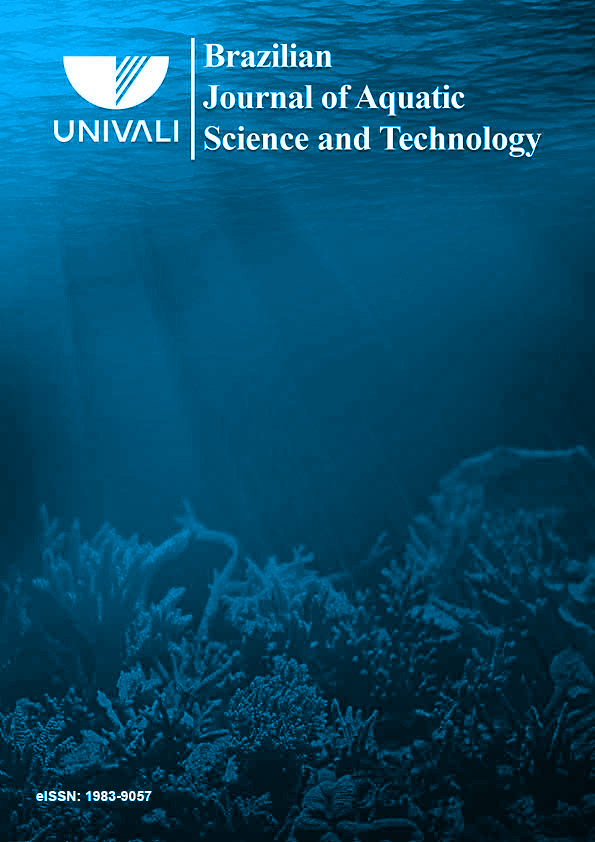

Microscopy technique istraditionally employed for assessing phytoplankton taxonomy. However, chemical approaches, such as the identification ofbiomarkers, allow to elucidate microalgae groups. This study aimed to identify the pigment profile of isolated microalgae speciesand to determine the seasonal pigment fluctuation in water samples from a marine mussel farm located in Armação doItapocoroy (26º47’00’’S, 48º36’30’'W), Brazil. For unialgal cultures, phytoplanktonic organisms were isolated and cultivated in f/2liquid medium under controlled temperature and light cycle. Cell content extracts were obtained and the pigment content for each species analyzed by High Performance Liquid Chromatography (HPLC). Pigment profiles of 13 marine microalgae were identified (12 Diatoms and 1 Dinoflagellate). Chlorophyll a and c2 were detected in all species. Fucoxanthin was not detected only in Prorocentrum micans, and diadinoxanthin was not detected only in O. mobiliensis. Chlorophyll a and fucoxanthin were most present in Diatoms, while peridinin was the major carotenoid in P. micans. For assessing the seasonal pigment fluctuation, water samples were collected periodically (within one to three weeks interval) through the years of 2014 and 2015. Along with microscopy counting, pigment present in the water samples were analyzed by HPLC. Bacillariophyceae had higher density in the summer and fall. On the other side Dinophyceae, Cryptophyceae, Euglenophyceae, Prasinophyceae, Dictyophyceae and Ebriidea, had an increase in density during winter and spring. Pigments such as fucoxanthin, zeaxanthin, diadinoxanthin, chlorophyll c3 and c2, were detected in samples throughout the year. Whereas prasinoxanthin, peridinin, dinoxanthin and antheraxanthin were detected mainly in samples collected during winter and spring.






Ciências Ambientais, Ambientes Aquáticos e Costeiros.
BJAST adota a política de publicação contínua de artigos. Assim, sempre que um manuscrito for aprovado para publicação, estará imediatamente disponível para leitura.

